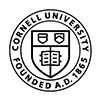Proximal Humerus Fractures
Content below from Orthobullets.com
-
Overview
- proximal humerus fractures are common fractures often seen in older patients with osteoporotic bone following a simple ground-level fall on an outstretched arm.
- sling immobilization is the treatment for the majority of these fractures.
- surgical treatment may be indicated in more complex and displaced fractures.
-
Epidemiology
- incidence
- 4-6% of all fractures
- third most common non-vertebral fracture pattern seen in the elderly (>65 years old)
- two-part surgical neck fractures are most common
- demographics
- 2:1 female to male ratio
- increasing age associated with more complex fracture types
- location
- may occur at the surgical neck, anatomic neck, greater tuberosity, and lesser tuberosity
- Risk factors
- osteoporosis
- diabetes
- epilepsy
- female gender
-
Pathophysiology
- mechanism
- low-energy falls
- elderly with osteoporotic bone
- high-energy trauma
- young individuals
- concomitant soft tissue and neurovascular injuries
- pathoanatomy
- vascularity of articular segment is more likely to be preserved if ≥ 8mm of calcar is attached to articular segment
- predictors of humeral head ischemia (Hertel criteria)
- <8 mm of calcar length attached to articular segment
- disrupted medial hinge
- increasing fracture complexity
- displacement >10mm
- angulation >45°
- predictors of humeral head ischemia does not necessarily predict subsequent avascular necrosis
-
Associated conditions
- nerve injury
- axillary nerve injury most common
- arterial injury
- uncommon (incidence 5-6%), higher likelihood in older patients
- most often occur at level of surgical neck or with subcoracoid dislocation of the head
-
Symptoms
- pain and swelling
- decreased motion
- Physical exam
- inspection
- extensive ecchymosis of chest, arm, and forearm
- neurovascular exam
- axillary nerve injury most common
- determine function of deltoid muscle and lateral shoulder sensation
- arterial injury may be masked by extensive collateral circulation preserving distal pulses
- examine for concomitant chest wall injuries
-
Radiographs
- recommended views
- complete trauma series
- true AP (Grashey)
- scapular Y
- axillary
- additional views
- apical oblique
- Velpeau
- West Point axillary
- findings
- combined cortical thickness (medial + lateral thickness >4 mm)
- studies suggest correlation with increased lateral plate pullout strength
- pseudosubluxation (inferior humeral head subluxation) caused by blood in the capsule and muscular atony
-
CT scan
- indications
- preoperative planning
- humeral head or greater tuberosity position uncertain
- intra-articular comminution
- concern for head-split fracture
- MRI
- indications
- rarely indicated
- useful to identify associated rotator cuff injury
Treatment:
- Nonoperative
- sling immobilization followed by progressive rehabilitation
- indications
- most proximal humerus fractures can be treated nonoperatively including
- minimally displaced surgical and anatomic neck fractures
- greater tuberosity fracture displaced < 5mm
- >5mm displacement will result in impingement with loss of abduction and external rotation
- fractures in patients who are not surgical candidates
- additional variables to consider
- age
- fracture type
- fracture displacement
- bone quality
- dominance
- general medical condition
- concurrent injuries
- outcomes
- immediate physical therapy results in faster recover
- Operative
- CRPP (closed reduction percutaneous pinning)
- indications
- 2-part surgical neck fractures
- 3-part and valgus-impacted 4-part fractures in patients with good bone quality, minimal metaphyseal comminution, and intact medial calcar
- outcomes
- considerably higher complication rate compared to ORIF, HA, and RSA
- axillary nerve at risk with lateral pins
- musculocutaneous nerve, cephalic vein, and bicep tendon at risk with anterior pins
-
ORIF
- indications
- greater tuberosity displaced > 5mm
- 2-, 3-, and 4-part fractures in younger patients
- head-splitting fractures in younger patients
- outcomes
- medial support necessary for fractures with posteromedial comminution
- consider use of a fibula strut if concerned about medial support
- calcar screw placement critical to decrease varus collapse of head
-
Intramedullary nailing
- indications
- surgical neck fractures or 3-part greater tuberosity fractures in younger patients
- combined proximal humerus and humeral shaft fractures
- outcomes
- biomechanically inferior with torsional stress compared to plates
- favorable rates of fracture healing and ROM compared to ORIF
-
Arthroplasty
-
indications
-
hemiarthroplasty
- younger patients (40-65 years old) with complex fractures or head-splitting components likely to have complications with ORIF
- recommended use of convertible stems to permit easier conversion to RSA if necessary in future
-
reverse total shoulder
- low-demand elderly individuals with non-reconstructible tuberosities and poor bone stock
- low-demand patients with fracture dislocation
-
hemiarthroplasty
- outcomes
for more information visit Orthobullets.com


















